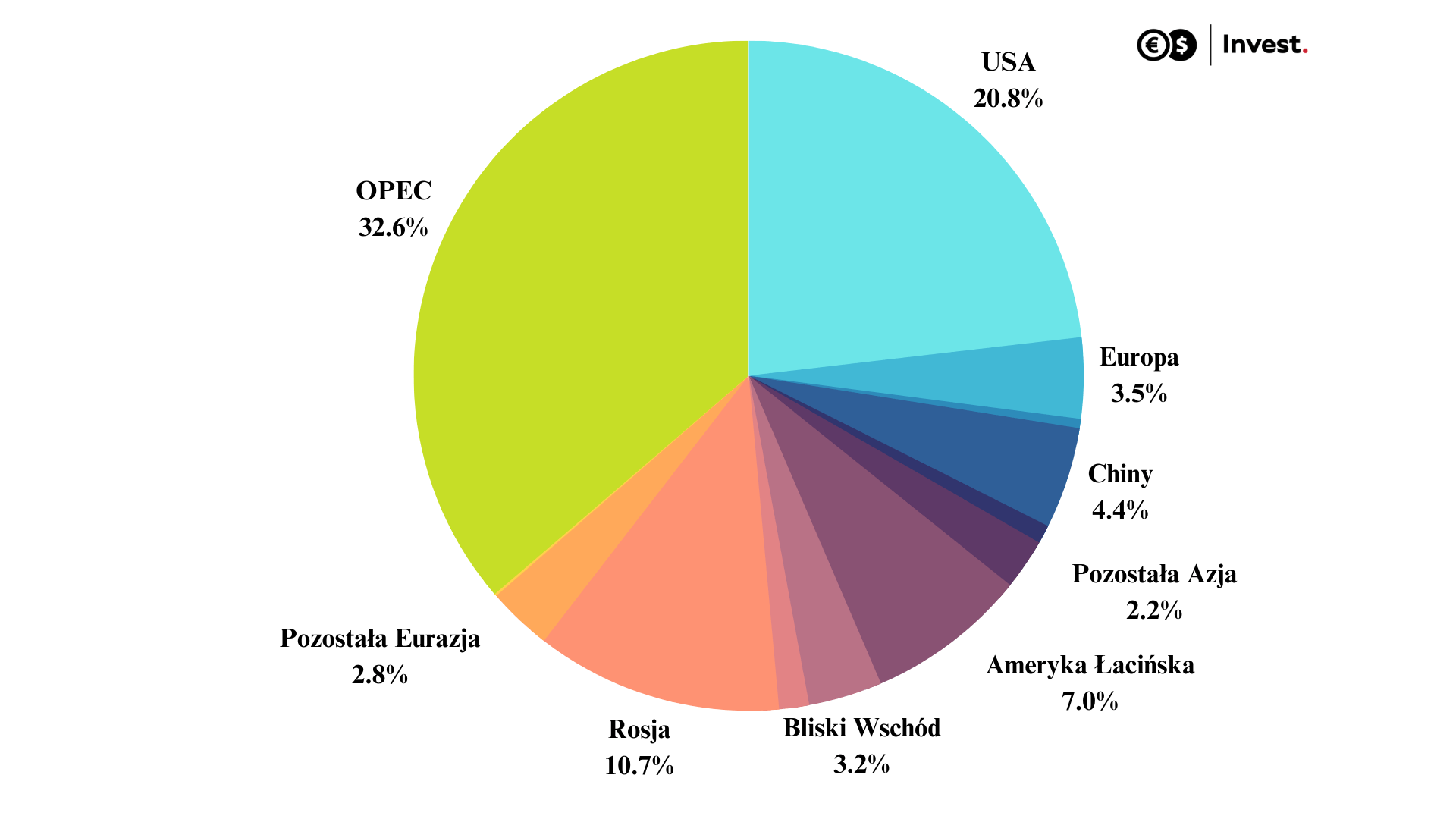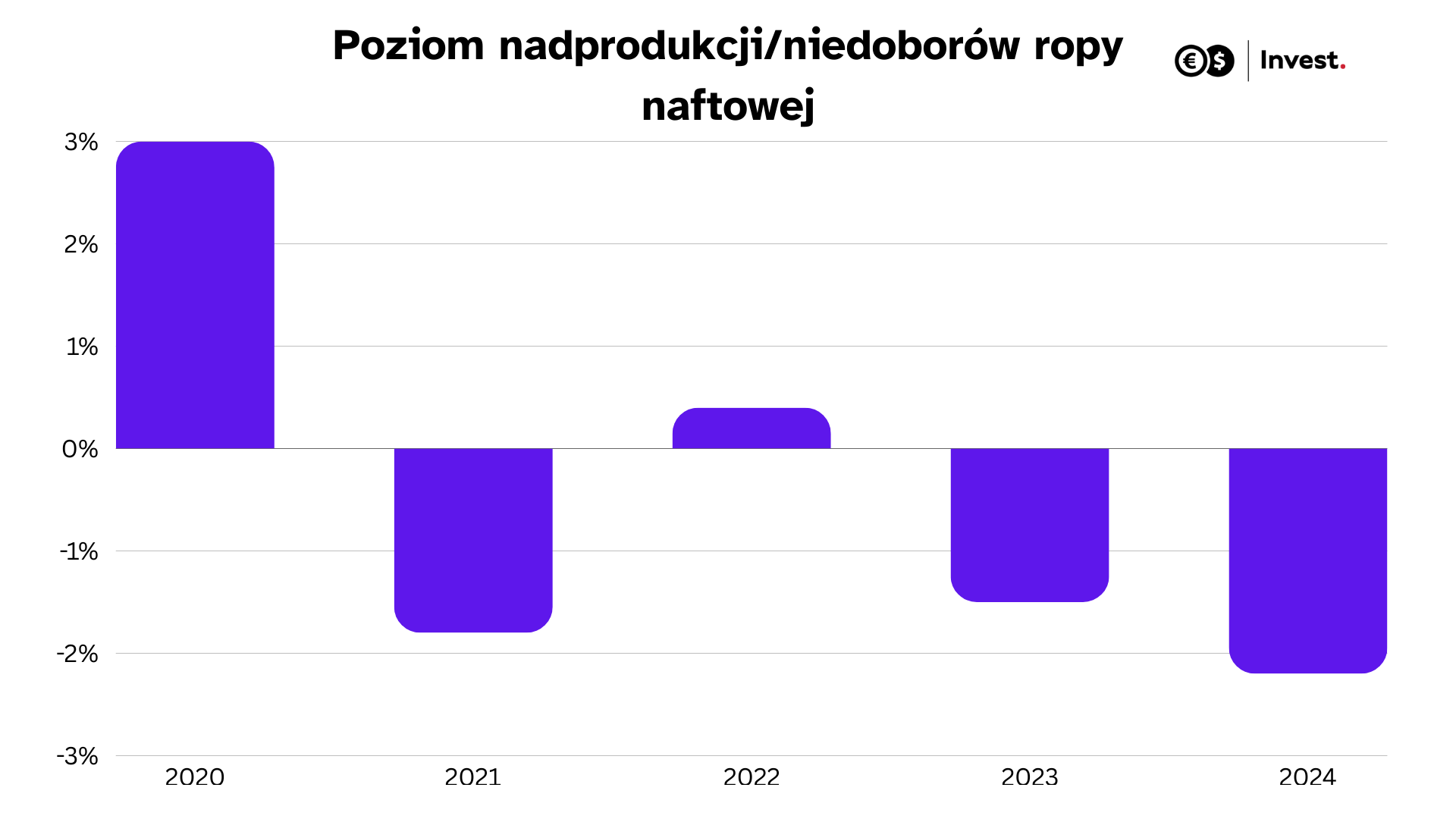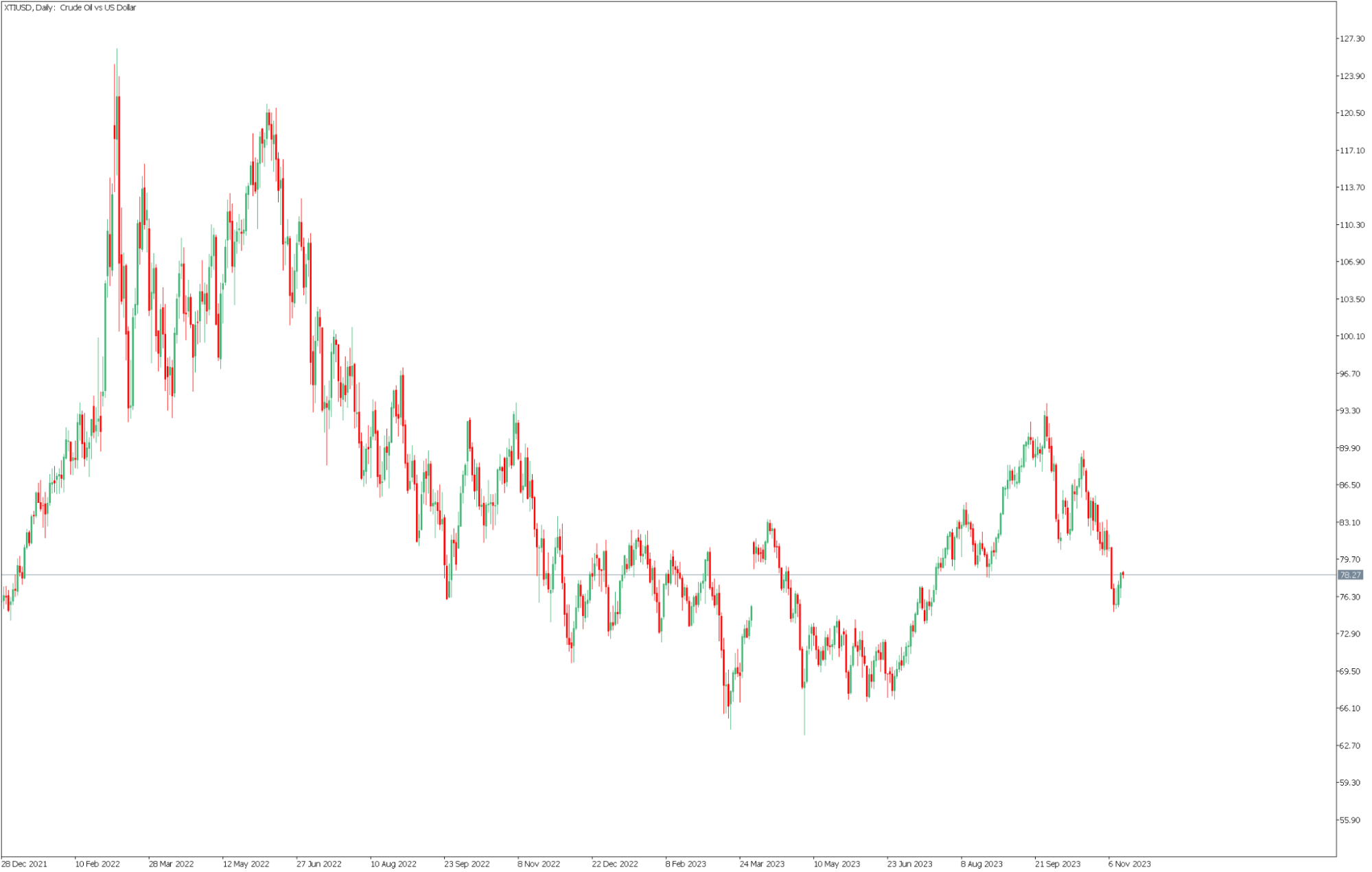The price of crude oil on global markets has fallen by 8.8% over the past month, despite earlier concerns about possible supply disruptions from the Middle East related to the conflict in Palestine. Nevertheless, no supply disruptions have been reported at present. In order to better understand the oil market situation, let us focus on the latest report from the OPEC cartel. From it, we can find out how the market is currently shaping up, and see forecasts for oil production and output worldwide.
Table of contents:
Situation on the oil market
The cartel of Middle Eastern countries together with, inter alia, Russia (the so-called OPEC+) has reduced oil production by 4.5% over the last three quarters. Let us recall that OPEC alone accounts for 32.6% of world oil production, and together with Russia, as much as 43.3%. This makes their decisions crucial for oil prices. Nonetheless, the United States is still the largest single producer, accounting for 20.8% of global production of this key resource.

Source: Conotoxia, OPEC data
However, it is difficult to analyse the oil market without looking at its demand. Here, the United States stands out, accounting for 19.4% of global production, China (15.8%) and the European Union with 12.9%. Hence, the situation in these entities is crucial for global demand. Currently, OPEC analysts forecast that demand in the US, China and the EU will not change in the coming year. However, overall global demand will increase by 2.2% driven by growth in India and other Asian countries.
Will the growing shortage in the oil market lead to price rises?
Saudi Arabia and Russia announced last week that they would maintain additional voluntary oil production cuts until the end of the year, continuing the current trend. At current production levels, the oil deficit could reach 3.3% of demand volumes in the current quarter and an average of 2.2% for the whole of next year. This is a relatively similar level of shortfall to that seen in 2021, when we saw uninterrupted increases in this crude.

Source: Conotoxia, OPEC data
According to OPEC, we can expect increasing pressure to increase production due to the growing deficit. As a result, the price of crude oil could experience a surge in the coming months, even exceeding the USD 100 per barrel level.
For its part, the US Department of Energy (EIA) forecasts that global liquid fuel production will increase by 1 million barrels per day in 2024 (an increase of around 1%). According to analysts, the ongoing OPEC+ cuts are intended to offset non-OPEC production growth, which may help keep the global oil market relatively stable. Although the current conflict between Israel and Hamas has not affected the physical supply of crude, uncertainty related to the Middle East war and other global supply conditions could pressure oil prices higher in the coming months, EIA highlights. The price of Brent crude is forecast to rise to an average of US$93 per barrel by 2024.
Log in and take the opportunity!

Source: Conotoxia MT5, XTIUSD, Daily
Grzegorz Dróżdż, CAI MPW, Market Analyst of Conotoxia Ltd. (Conotoxia investment service)
Materials, analysis and opinions contained, referenced or provided herein are intended solely for informational and educational purposes. Personal opinion of the author does not represent and should not be constructed as a statement or an investment advice made by Conotoxia Ltd. All indiscriminate reliance on illustrative or informational materials may lead to losses. Past performance is not a reliable indicator of future results.
CFDs are complex instruments and come with a high risk of losing money rapidly due to leverage. 72.95% of retail investor accounts lose money when trading CFDs with this provider. You should consider whether you understand how CFDs work and whether you can afford to take the high risk of losing your money.


